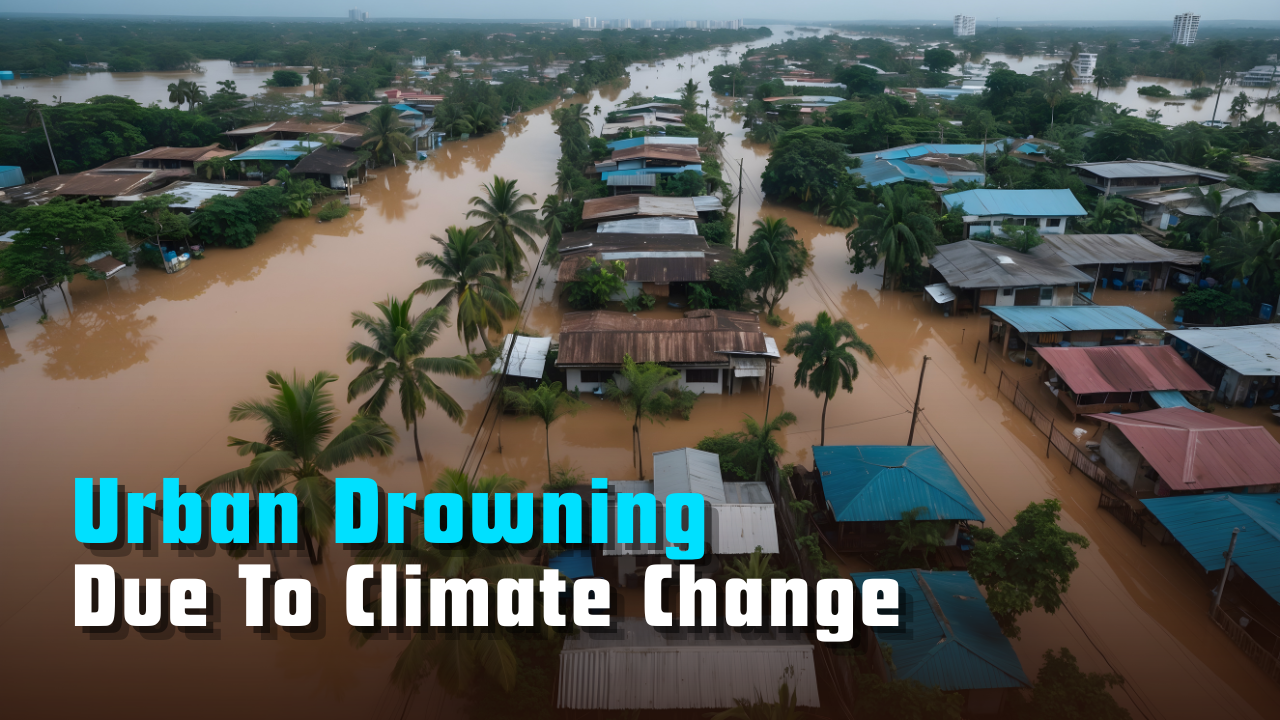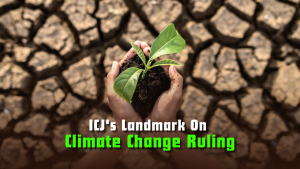Font size:
Print
Urban Drowning Due To Climate Change
As climate change events spike, key focus should be on drowning prevention
Urban drowning case: In April 2025, a four-year-old girl drowned in an uncovered 11-foot water tank at a Tamil Nadu summer camp, highlighting drowning risks in everyday urban spaces and sparking urgent calls for improved public safety.
About Urban Drowning
Drowning is a silent epidemic in India, claiming over 38,000 lives annually, according to the National Crime Records Bureau (NCRB). Causes of Urban Drowning include:
- Urban Flooding: Increasing extreme rainfall causes recurrent urban floods in Mumbai, Delhi, Chennai, and Bengaluru, with WHO reporting that 75% of flood deaths result from drowning.
- Unsafe Infrastructure: Many urban utilities like tanks, channels, pools, and drains are uncovered, unsilted, or unfenced. Even where infrastructure is built well, lack of maintenance and funding leads to deterioration and danger.
- Neglected Safety Norms: No national law mandates pool fencing, and the absence of signage, lifeguards, and emergency protocols heightens danger.
- Socioeconomic Vulnerabilities: Children (0–14) account for one-third of drowning deaths; urban poor, migrants, and slum dwellers face heightened risk due to unsafe, flood-prone living conditions and lack of safety measures.
Global and Regional Scenario
- According to the World Health Organisation (WHO):
- An estimated 236,000 people die annually from drowning worldwide — about 650 deaths per day or 26 per hour.
- The South-East Asia Region, which includes India, reported 70,034 drowning deaths in 2019, the second-highest globally.
- The actual burden is underreported, as flood-related and transport-associated drownings are often excluded from statistics.
- In 2023, the WHO adopted Resolution WHA76.18, calling for multi-sectoral, coordinated actions to tackle drowning as a major public health issue. The theme for 2024: “Anyone can drown, no one should” with the slogan “Seconds can save a life” highlights the preventable nature of these deaths.
Government Initiatives
- Strategic Framework for Drowning Prevention (2023): India’s first national drowning prevention framework, launched by the Ministry of Health and Family Welfare, focuses on multi-sector collaboration, public awareness, action plans, safer waterbody infrastructure, and data-driven risk interventions.
- National Disaster Management Authority (NDMA) Guidelines on Urban Flooding (2010): NDMA identifies urban flooding as a major drowning hazard and promotes early warning systems, flood-resilient drainage infrastructure, and emergency response training for local authorities.
Challenges and Gaps
- Fragmented Data: Multiple sources (NCRB, NDMA, WHO) report inconsistent figures ranging from 1,348 to 62,000 deaths annually.
- Lack of Dedicated Policy: Drowning is not classified as a public health crisis in India. The National Strategy for Prevention of Unintentional Injury does not address urban drowning.
- Urban Missions and Flood Resilience: Smart Cities Mission and AMRUT lack integrated flood resilience planning. Only 719 drainage projects completed in 7 years under AMRUT.
- Financial Imperatives: India invests just 0.7% of GDP in urban infrastructure, far below global norms; estimated needs range from $2.4 trillion by 2050 to $13.4 trillion by 2070, while urban floods cause $4 billion in annual losses, potentially rising to $30 billion by 2070 without action.
Way Forward
- Urban flooding is not inevitable. It’s a result of poor design. India needs to adopt water-sensitive urban planning.
- Blue-Green Infrastructure: Integrate lakes, wetlands, stormwater channels with green spaces like rain gardens, parks, and green roofs.
- Decentralised Rainwater Harvesting (RWH): Promote local rain capture through recharge pits, permeable pavements, and rooftop harvesting.
- Enforce Ecological Limits: Ban construction on floodplains, lakebeds, and wetlands — nature’s safety valves.
- Climate-Smart Urban Planning: Design cities for current rainfall patterns, not outdated historical norms. Develop flood-risk maps, zoning laws, and resilient infrastructure.
Subscribe to our Youtube Channel for more Valuable Content – TheStudyias
Download the App to Subscribe to our Courses – Thestudyias
The Source’s Authority and Ownership of the Article is Claimed By THE STUDY IAS BY MANIKANT SINGH



